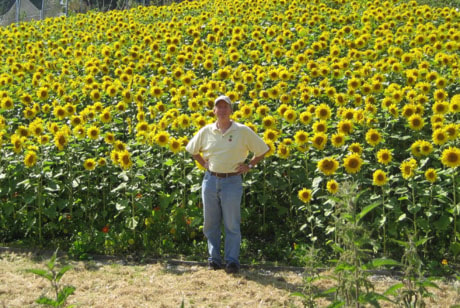TORONTO — Whether your garden oasis is a sprawling backyard or assembled in containers on a balcony, going organic is achievable wherever you opt to stick in your spade, according to one of Canada’s best-known gardening experts.
Mark Cullen shares suggestions for grooming lawns and gardens in an eco-conscious fashion in his new book, “The Canadian Garden Primer: An Organic Approach.”
Cullen says the inspiration was mainly drawn from experience with Canadian farmers over the past decade and noticing an emerging interest in the environment as it relates to gardening.
What’s more, concerns about the environmental costs of trucking in foods have boosted interest in eating locally, which was the goal of the 100 Mile Diet, he says.
“I talk about the 100-yard diet, and my suggestion is if you really want to have control over the quality of food that you bring into the kitchen and prepare for a meal, why not grow it yourself?” Cullen said in an interview Wednesday. “Then you’ll know exactly what has been sprayed on it and . . . exactly where it’s come from.”
Regardless of the space at your disposal, Cullen says the foundation to growing organic — like any garden — is properly preparing the soil prior to planting.
Ideally, you want a nice, open soil that typically has a lot of organic matter — namely compost, like kitchen scraps or rotted-down yard waste — that will allow water to move through it fairly readily, he says. When it’s clay, the soil particles are small and bind together, and don’t allow water to move.
“When that happens, you get all kinds of problems — roots rot and plants die and plants don’t grow or perform the way they really ought to.”
There should also be a component of sharp or coarse sand — not beach sand — to allow water to move efficiently, he says. When added to clay soils, it helps improve air circulation and drainage, he writes.
While water is essential to growing and greening lawns and gardens, simply setting off the sprinkler for indefinite periods can damage plants and waste a precious resource in the process.
To conserve water, Cullen says a gardener’s greatest secret weapon is mulch. Finely ground cedar or pine bark mulch — about five or six centimetres thick — around perennials, annuals, roses or through shrub beds will retain moisture in the soil and reduce the need for watering by 70 per cent, he says. It also insulates the soil from weed germination, helping to reduce weeding 90 to 95 per cent the first year, he adds. Before you pitch your fall leaves to the curb, Cullen recommends keeping them as a free, readily-accessible mulch. They also provide carbon, a much-needed ingredient in all successful soils, he writes. Gardeners may also want to consider making use of rainwater collected in a barrel.
“It’s always warm in the summer months and it’s charged with oxygen,” an element that plants “love” to have at their roots, Cullen said.
He suggests never watering lawns more than once weekly. When you do, apply about 2.5 centimetres at a time, roughly a two to three-hour time period for most sprinklers.
“Just once a week will cause the roots of your grass plants to go deeper looking for that water,” he said. “The deeper the roots, the more drought-tolerant your grass plants, and that means that your grass will demand less water in the long-term.”
On The Net:
www.markcullen.com
